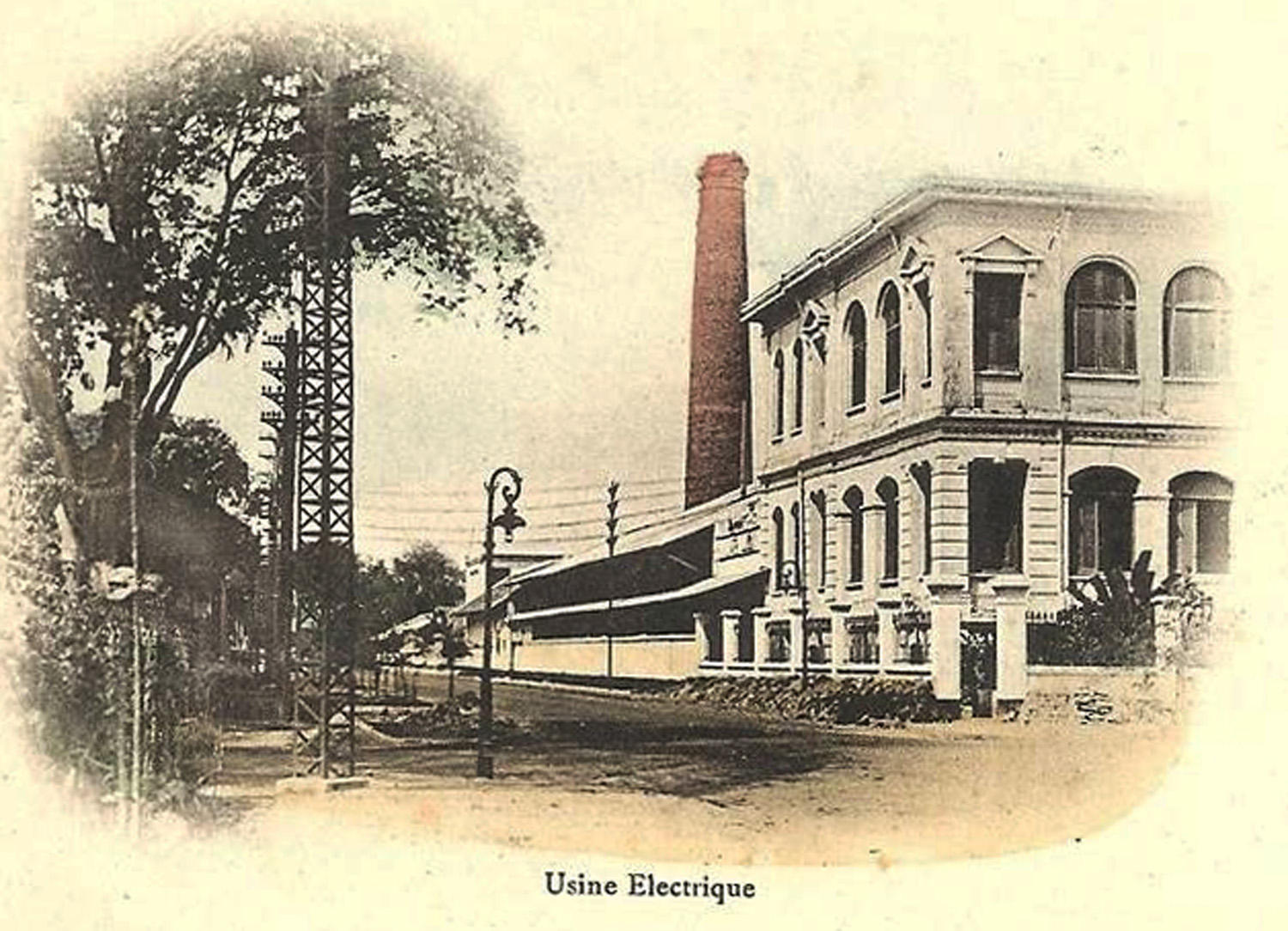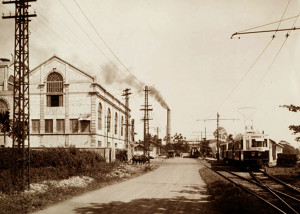This article was published previously in Saigoneer http://saigoneer.com
The recently rebuilt EVN Hồ Chí Minh City Power Company building at 72 Hai Bà Trưng stands on the site of Saigon’s very first electricity station.
Electricity was first used in Indochina in the late 1870s to set up a telegraphic network, but it took another two decades to develop coal-fired steam generators which could function efficiently in the tropical climate and provide sufficient power for street lighting.
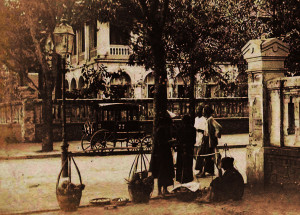
One of the original oil lamps on rue Catinat in 1895
In the meantime, Saigon’s streets were lit by oil lamps.
As late as 1887, Leon Caubert wrote: “It seems that dynamos suffer almost as much as men from the humidity which prevails almost constantly here in Cochinchina, inducing oxidisation with surprising speed. However, it must be said that, although the city is still lit by oil, the quantity of Saigon’s street lights makes up for their quality.”
Soon after this the technical obstacles were overcome, and in 1896 the Société d’Électricité de Saigon (SEVS) was founded to supply electricity to the Cochinchina capital. In the same year, the company opened its first AC generating electricity station on the rue Nationale in Saigon, the site still occupied today by the EVN Hồ Chí Minh City Power Company (Tổng công ty Điện lực thành phố Hồ Chí Minh) at 72 Hai Bà Trưng. A substation was later opened in Chợ Lớn.
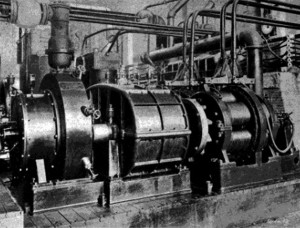
Three Laval turbines were installed in the 1896 electricity generating station
According to the Bulletin économique de l’Indo-Chine of 1908, “In Saigon, light is provided by the factory of the Société d’électricité de la ville de Saigon, which is actuated by steam pumping apparatus with a driving force of 1,100 horsepower.” Street lighting was initially confined to the two city centres and comprised arc lamps which generated light by creating a spark or electric arc between two carbon rods inside a gas-filled glass bulb.
In 1909, SEVS was bought out by the Compagnie des eaux et d’électricité d’Indochine (CEE, founded 1900), which already held the concessions for water in Saigon and Chợ Lớn and both water and electricity in Phnom Penh. In this way, CEE secured a monopoly on the distribution of water and electricity in the three largest cities of Cochinchina and Cambodia. It would remain the largest of the three electricity suppliers in Cochinchina until the departure of the French, the other two companies being the Société centrale d’éclairage et d’energie (SCEE), covering Cần Thơ and the Mekong Delta, and the Union électrique d’Indochine (UNEDI), serving Cap Saint-Jacques and Phan Thiết.

CEE’s “Centrale-Éléctrique” in Chợ Quán opened in 1913
Before World War I, electricity was used almost exclusively for street lighting, and the extent of the illumination remained extremely limited. In 1910, colonial lawyer George Durrwell commented that, even in the vicinity of the Saigon Municipal Theatre, “the lighting is very poor, despite the pretty penny spent from the municipal budget on the profusion of electric lamps. This is truly “light hidden under a bushel.” Only the place du Théâtre forms a bright spot amidst the darkness.”
In June 1913, CEE moved to rectify this situation by opening a much larger AC three-phase electricity plant at Chợ Quán, with a design capacity of 5,000 kWH. This new “Centrale-Éléctrique” and its various substations generated enough electricity to meet the basic street lighting needs of Saigon, Chợ Lớn and several outlying areas, including Lái Thiêu and Thủ Dầu Một.
In 1913, the old electricity generating station on rue Paul Blanchy (formerly the rue Nationale) became a substation. By this time, CEE also had substations at the Chateau d’eau [modern Turtle Lake], boulevard Norodom [Lê Duẩn], Chợ Đũi, Phú Thọ, Khánh Hội and Tân Sơn Nhất, as well as within important civic installations such as the Palace of the Government, the Hôtel de ville and the Municipal Theatre.
After World War I, the electrification of the Saigon tramway network and the increasing use of electricity for home lighting led to a significant increase in demand. Improvements in steam turbine design increased generator efficiency many times over, and by 1930, CEE’s annual power output had reached 37.8 million kWH.
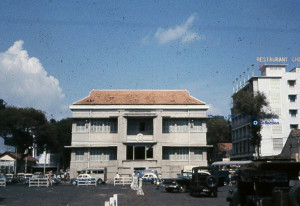
A new CEE headquarters building was inaugurated in the late 1950s
Demand for electricity increased further in the late 1930s, driven by an expanding economy and increased use of household electrical appliances. By 1942, CEE was generating 56.5 million kWH per annum out of an Indochina total of 115.5 million kWH, and all of the major towns in its catchment area had been connected to the grid.
Following the departure of the French, the old 1896 electricity station was demolished and replaced by a new electric company headquarters building. The current building, the third on this historic site, was inaugurated in 2011.
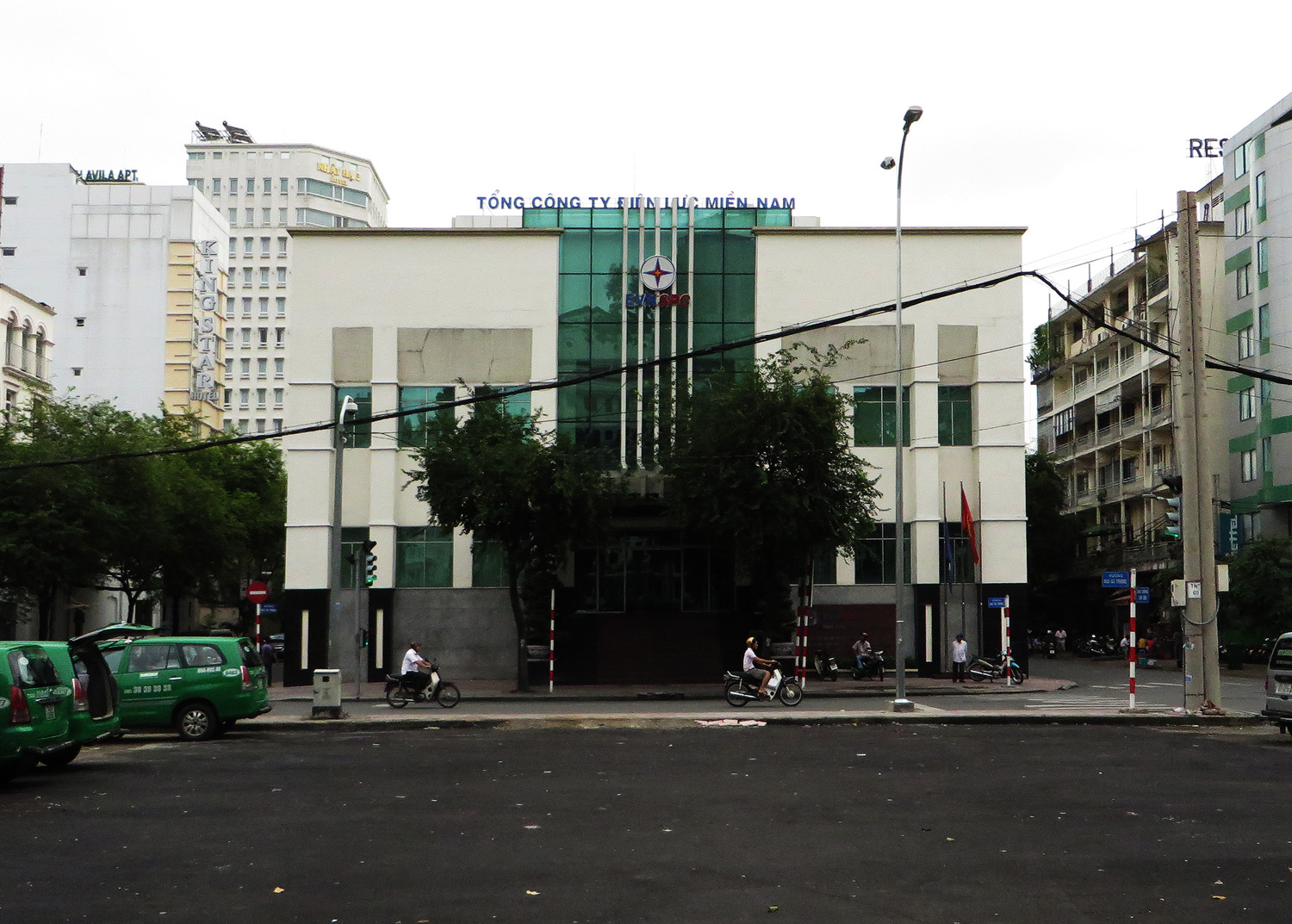
Inaugurated in 2011. the current EVN Hồ Chí Minh City Power Company building at 72 Hai Bà Trưng is the third to stand on this historic site
Tim Doling is the author of the guidebook Exploring Saigon-Chợ Lớn – Vanishing heritage of Hồ Chí Minh City (Nhà Xuất Bản Thế Giới, Hà Nội, 2019)
A full index of all Tim’s blog articles since November 2013 is now available here.
Join the Facebook group pages Saigon-Chợ Lớn Then & Now to see historic photographs juxtaposed with new ones taken in the same locations, and Đài Quan sát Di sản Sài Gòn – Saigon Heritage Observatory for up-to-date information on conservation issues in Saigon and Chợ Lớn.


